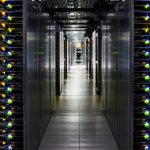Estimated reading time: 5 minutes
There is a focus group within Outsourcing Malaysia (OM) that wished to uplift the data centre industry in Malaysia. This focus group, called the Malaysian Data Centre Alliance (MDCA), was formed around 2013 by a collective of local data centre players.
When MDCA was formed in 2013, it was expected to drive the development of data centres in Malaysia. It’s objective was to transform Malaysia into a preferred data centre hub.
Table of contents
This was aligned with the Economic Transformation Programme (ETP) at that time which wanted to position Malaysia as a world-class data centre hub. At that time, MDCA had 21 members with combined data centre floor space of 1 million square feet.
MDCA targeted 5 challenges
The 17 founding members of the Malaysian Data Centre Alliance (MDCA), with support from MDeC, PEMANDU and Outsourcing Malaysia were motivated. MDCA chairman at that time, Billy Lee, said, “The main motivation behind MDCA, is to have a uniform voice in the industry that can help address the specific challenges.”
Five main challenges had been identified in the areas of business development, connectivity & bandwidth, green tech standards, energy and standards & policies.
Five members from the founding members were tasked to head up each of the five challenges or initiatives that were identified. For example, AIMS Data Centre CEO Chiew Kok Hin was an MDCA committee member who also overlooked business development for the data centre alliance.
The 2016/2017 MDCA committee members are as listed below. An anonymous source has shared this is not the latest lineup.

Quick calls to a few data centre member reps, reveal that MDCA is also currently not active, and this has been the case for a few years.
Recent cloud and data centre developments
In middle June, The Vibes shared about the government seeking to regulate data centres and cloud service providers (CSPs) by 2022. The report goes on to say that the existing Communications and Multimedia Act (CMA) 1998 has provided exemption for web hosting and client server providers from being licensed.
Definitely more clarity is required about the entire framework.
In fact, there has to be more clarity about the scope of regulations, and possibly even clearer understanding about the capabilities of our local data centre players, local cloud players, and foreign cloud players.
There has been feedback that the regulator overseeing this, MCMC or the Malaysian Communications and Multimedia Commission, has to initiate a round of public consultancy sessions with each stakeholder.
In fact, there has to be more clarity about the scope of regulations, and possibly even clearer understanding about the capabilities of our local data centre players, local cloud players, and foreign cloud players.
Relevant, up-to-date policy for cloud and data centre players
Something like a USP also does not seem relevant for the data centre and cloud industry.
A universal services provision (USP) fund is meant to go towards building out communications infrastructure in under-served areas where it is not economically viable for one service provider to do so. In other words, all telco providers “share” the cost of building telco towers (if needed), base stations, and whatever is required for an area to have basic telephony and/or Internet services.
The USP works well because communications is a basic and universal human right.
What’s going on?
With MyDigital outlining plans to migrate 80-percent of data to a hybrid cloud system by end of 2022, the foundation to build a sustainable policy has to begin now.
Do not forget.
The CMA 1998 was created at a time when cloud services were not prevalent as they are today. The language it uses (based on news reports), terming “cloud” and “data centres” as web hosting” and “client server providers”, Does Not take into account the evolution cloud services and our data centres have undergone over the years.
It does not take into account the issues the local data centre industry faced all those years ago, which an alliance of players tried to solve, and still are unclear about today: business development, connectivity & bandwidth, green tech standards, energy and standards & policies.
Engagement with cloud and data centre ecosystem
Before whispers of the industry being regulated began, MCMC had conducted a National Interconnection Ecosystem Lab.
The CMA 1998 was created at a time when cloud services were not prevalent as they are today. The language it uses (based on news reports), terming “cloud” and “data centres” as web hosting” and “client server providers”, Does Not take into account the evolution cloud services and our data centres have undergone over the years.
One of the objectives of the lab was stated as, “To develop a strategic plan for the development of Data Centre, Internet Exchange Points (IXP) and International Connectivity (IC) in Malaysia, to ensure Malaysia continues to remain competitive as an attractive business destination for investments, especially for international content providers such as cloud-based services and over-the-top media (OTT) services.”
IT BYTES BACK! says:
There is a whole lot that has to be sorted out and FAST, if we are to move to hybrid cloud in a secure and sustainable manner by end of 2022.
Right now, the data centre and cloud ecosystem comprises of many, many different types of players, There is a long value chain of building out data centres, equipping them up until how they are piping content, local and foreign, to every connected device in the country.
Which agency would be able to regulate it in a meaningful and all-encompassing manner? Is the CMA 1998 enough?








